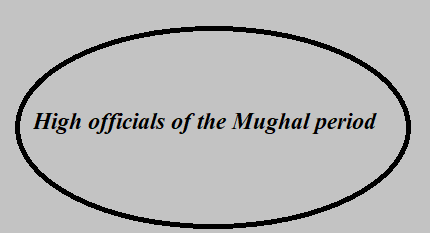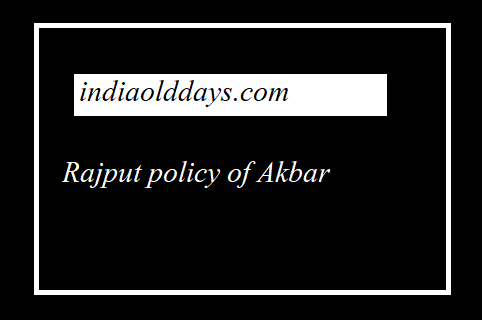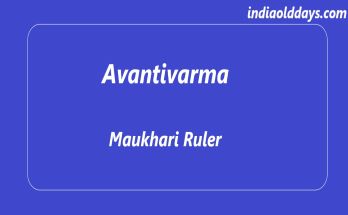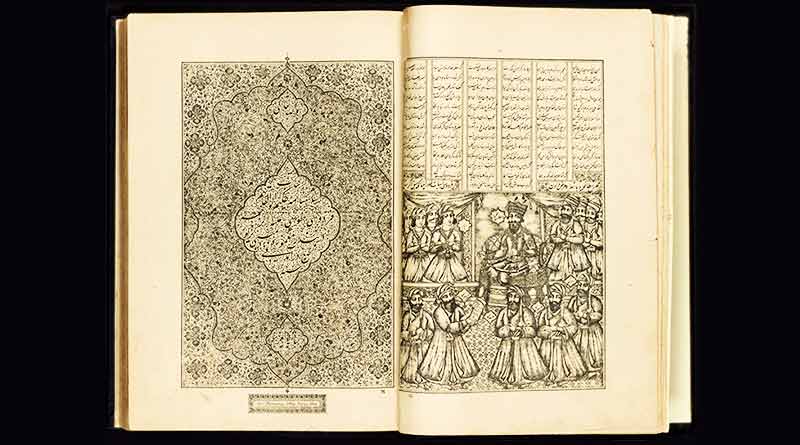How was the Mughal Province Provincial Government
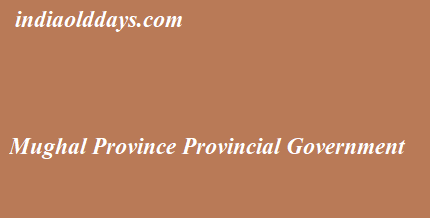
Other Important Facts-
- Introduction of life of Mughal emperor Akbar
- Religious policy of Mughal Emperor Akbar
- High officials of the Mughal period
The provincial governance of the Mughals was a model of central rule. From the point of view of the administration of the Mughal empire-
- Suba In the( provinces),
- Suba In the governments (districts),
- Governments in th paraganon(Mahalon) and,
- Parganas were divided into villages.
During the reign of Babur and Humayun, the administrative divisions of the Mughal territories were divided into districts (government) than the provinces. Sher Shah also did not properly organize the provinces.
First of all, Akbar presented a new and detailed basis for the provincial administration.
The first time was in 1580 AD by Akbar. Divided his entire empire into 12 states, but in the last time of the reign, the conquest of South India was described only after the conquest of Barar, Khandesh and Ahmadnagar.
But Abul Fazl has described only 12 suburbs in his mirror.
Jahangir conquered Kanganga and merged it in the Lahore province, which was already a diocese. Therefore, the number of states in its time was undone.
Shah Jahan established Kashmir as a separate diocese for Kashmir, Thatta and Ursa (which were included in the Lahore, Multan and Bengal provinces respectively in the time of Akbar), in which the number of the states increased to 18 during that period.
Shah Jahan in 1633 AD Ahmednagar was completely mixed with the empire. But he did not make any new diocese (because in the time of Akbar, Ahmednagar had become a diocese).
By the victory of Bijapur (1686) and Golconda (1687) by Aurangzeb, the number of the states increased to 20 by adding to the empire.
subedar-
In the time of Akbar, the chief officer of the provincial administration was officially called the Governor (governor), in the time of his successors – Nazim or Suba-sahab began to be called. But in the public it is the sub-satra, Was known by name.
The subedars were the entire military and civil rights of the province. The transfer of the Subedar was required for reading.
In 1586 AD, Akbar made a new change in the subcontinent, creating a new Divine Word which controlled the power of the suburbs.
The governor had the right to punish any jagir or officer for violating his apparent order, but he could not punish any emperor who was directly related to the center.
In the Mughal period, the governor (Subedar) had given Todaramal the right to treat treaties with the Rajputs and to give them peace.
Provincial Diwan-
The provincial Diwan (Diwana Suba) was the finance officer of the province (province) although he was below the governor in the office, but he was not subdue of the subedar. He was directly responsible for the Royal Divine.
Diwan was the head of finance and revenue in the province, while the chief of the Subedar was the head of the executive.
The main function of Diwan-e-Suba was to decide revenue collection and other taxes, keeping account of income expenditure, giving details of the economic condition of the state to the Central Government, along with the decision of the 2 Civil (money or levy) lawsuits. Thus, the Diwan and the Sub-States were in control of each other. This division of the provincial government was similar to the Arabic system of the Egyptian government.
Bakshi-
Bakshi was appointed by the Royal Court on the request of Central Mir Bakhshi.
The main task of Bakshi was to take care of the army of the sub-provinces, the provincial Bakshi had to work as the Vika Nigar (Waqia Navus) too. In this form, its work was to give all information of the province to the center.
There was a difference between the provincial Bakshi and Central Mirabakhshi that the provincial Bakshi was the wage earner of the army, while the central Mirbakhshi was not the wage earner of the army. This work was centered around the center.
On the confrontation between the provincial governor and the provincial Diwan, there was another group of reporters to send all the information of the states to the Central Government, which was called Savani-Navas (Intelligence Nivas). They secretly took the center to the They used to provide information and later they also worked as postal officials.
Provincial Sadar-
The post of provincial Sadar and Provincial Kaji was once given to one person only. Therefore, in view of the Sadr, he used to administer the moral character of the people and the laws of Islam and follow the laws of Qazi.
Regarding succession or other controversy in provincial home grants, he also settled it. It was also called Mir-e-Adal.
Kotwal used to look after the law and order in the capital of the state and the bonge 2 cities.
Government (district) rule-
During the Mughal period, the government (districts) had the important officers like Faujdar, Amil, Kotwal and Kazi.
Faujdar-
The Chief Administrator of the government was a soldier during the Mughal period. Its main task – to maintain law and order in the government and to protect the public from thieves. In addition to this, he also had to help in the collection of revenues to help the Amalgujar.
In the time of Sher Shah, it was called Munsif-e-Munshafan. He used to inspect the work of the parish employees. During the time of the Mughal emperors, judicial rights were also given to the forefathers.
After the death of Aurangzeb almost the post of the army became hereditary.
Amalgujar-
Amil or Amalgujar was the finance officer of the government. He had to recover his work and take care of both agriculture and farmers. He also collected revenue from Khalsa land.
In addition to this, whenever the judicial liability of Kotwal was played only, the law and security system and the cleanliness system.
vitikci-
Under the amal gujar, there was a clerk, he had to prepare the land and rent papers. On the basis of which the amalgazar used to the levy.
Kotwal’s appointment was done by the Central Government on the recommendation of Mir-Atish. His main work was to establish peace and security in the city, to arrange cleanliness and cleanliness. In addition, he had to do judicial work too.
Kotwal’s Kachari was called Chaibutra, where he used to do judicial work related to the disputes of the city. He was responsible for all incidents that occurred in the city. The treasury was the treasurer of the district (district). Its main task – to protect the exchequer. It was under the amalgazar.
Kazi-e-Government- was appointed by the Sadr-us-sudooron the recommendation of the kazi-e-Shoba.
kazi was also given the title of Shari’ah-phnah because of the work of the magistrate.
During the reign of Aurangzeb, Kazi was also responsible for the recovery of jazia and zakat taxes.
Administration of Pargana-
Each government was divided into many parishes. The chief officers of Pargana used to be Shikdar,Amil, Fotdar, Kanugos and Karakun.
Shikdar- it was the chief officer of the parrot. His main work – to establish peace system in Pargana and to help in recovering the revenue.
Amil- It was the finance officer of Pargaon. It was his main work to recover levy from the farmers.
Akbar appointed one Amal in the 18th year of his reign, in each Pargan (Mahal), whose gross income was 1 crores (Rs. 25000) per annum. Which was called Karan in the public.
During the rule of Shah Jahan, one Pargana Amin was appointed to determine the marginalization in each paragain.
Kanungo was the head of the families of the neighboring parishes. He used to prepare all the papers for rent and agriculture.
According to Abul Fazl – 1 percent of the levy recovered by the lawgun who was found in the form of a tiger was called a nankar.
There were clerks of parikun paragya, who used to do the work of writing. Thus, the work which was done in the district (government) was the same as the worker in the paragana.
Parganas were written only in Persian language during the time of Akbar.
Village administration –
The Mughal ruler considered the village as an autonomous institution, whose administration was not given the responsibility of the Mughals. However, the traditional village panchayats only looked after the security of their village – cleaning and education.
The village’s chief officer was the village chief, which was called Khut, Mukadam or Chaudhary. There was a patwari for her help.
In the Mughal period, a percentage of revenue was given to Patwari in the form of a commission.
In the Mughal period, villages coming under parishes were called Maavada or Dih.
The small-2 settlements under Maawada or Dheh were called Nagla.
During the reign of Shah Jahan, another unit was constructed between the paragana and the governments (districts), which was called Chakk. Under which some parganas were used.
During the Mughal period, the officer named Musaddi used to take care of the administration of the ports.
In the Mughal period there was a government official on the factories. For its administration, a department called Deewan- i -Buyut was established and its head was in Diwan-i-Būyūt.
Khilat (Khiltal) was specially remarkable in the items made in Mughalship factories. The dress was a respected honor, which the King gave to special persons on special occasions.
For the first time in the Mughal period, Babur used to attack the fort of Bhera (1519 AD). But for the first time in the South India, guns were used by Bukka Rai, ruler of Vijayanagar, in 1367 AD. Was against the Bahamani.
Number of suba in mugal periods-
Akbar-According to aine Akbari, there were 12 number of states in Akbar’s time. In the time of Akbar, the total province was 15. In the 12 old suburbs, join 3 new sub-divisions named after them – Barar, Khandesh and Ahnnagar.
Jahangir-15 provinces (conquering Kanganga and joining the Lahore province, which was already a diocese, thus their number was 15.)
Shahjahan – there were 18 provinces in its time 3 provinces (Kashmir, Thatta and Orissa) which were included in the time of Akbar’s time in Lahore, Multan and Bengal suburbs) made an independent diocese.
Aurangzeb – There were 20 or 21 provinces in its time Apart from these, 2 states (made in Bijapur-1686 and Golconda built in 1687)
Note- In Aurangzeb’s time, the number of sub-20 was mentioned by Dr. Harishchandra Verma and Dr. L.P. Sharma. But Datta, Rai Chaudhary and Majumdar and BKAgnihotri have also described the area as a province (i.e. in 14 states in north India, 16 states in south India and 1 in the province of duba.
Uttar Pradesh (14) – Agra, Delhi, Allahabad, Aghadh, Ajmer, Gujarat, Bihar, Bengal, Kabul, Lahore, Multan and Malwa, Kashmir, Ursa, Thatta (Sindh).
Sub areas of South India (6) – Area acquired by Khandesh, Barar, Ahmednagar, Bijapur, Golkonda and Shanbaji
Area of Afghanistan (1) suba
There were only 4 Council of Ministers in Akbar’s time-
1) lawyer,
2) Diwan or Wazir,
3) Mir Bakshi,
4) Sadr-us-sudoor
The post of Mir-e-Sama was established in the time of Akbar but it was not a ministerial post, but later the minister became the post and became so important that it was considered to be the last limit for getting the Wazir post.
Reference : https://www.indiaolddays.com/

